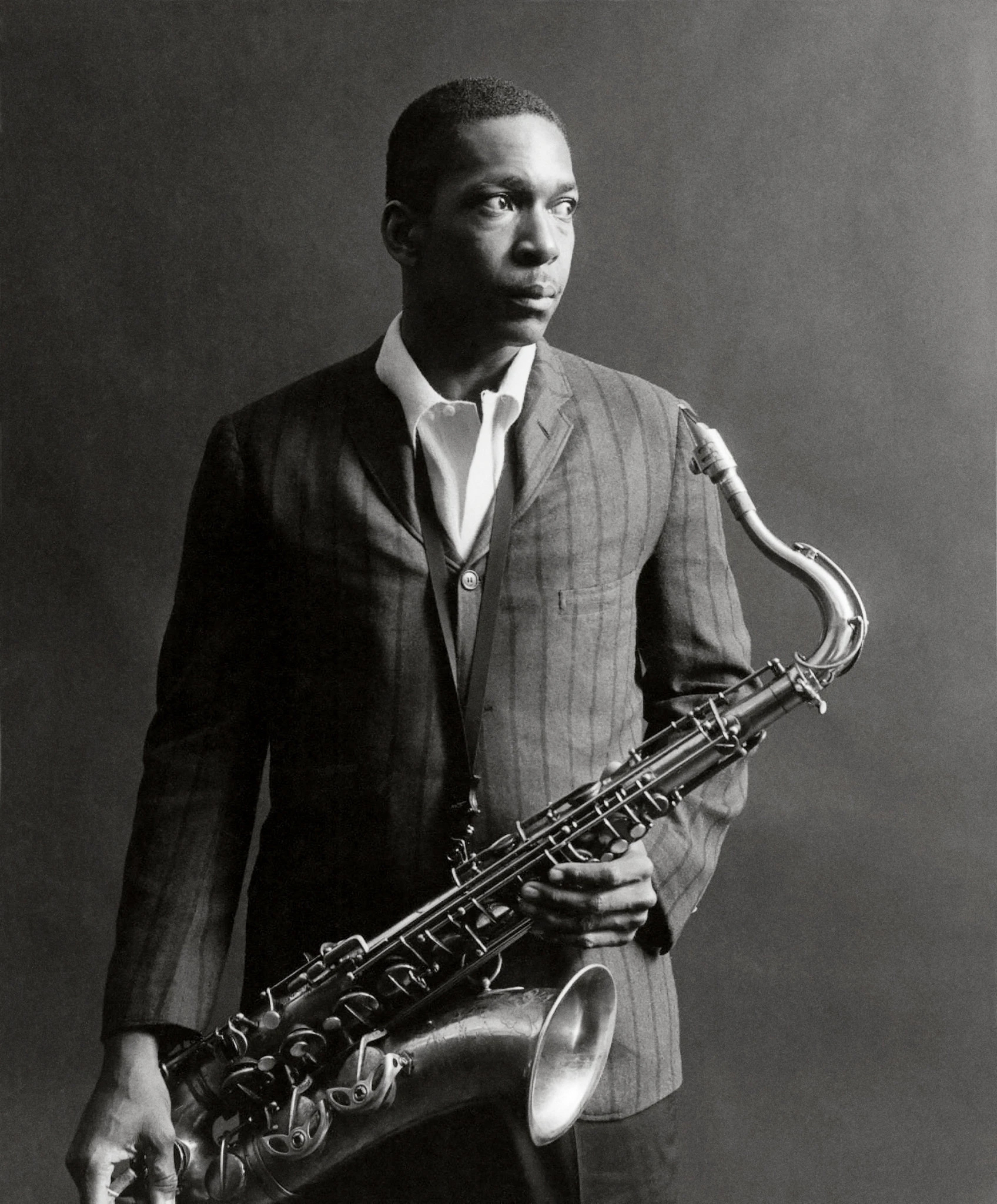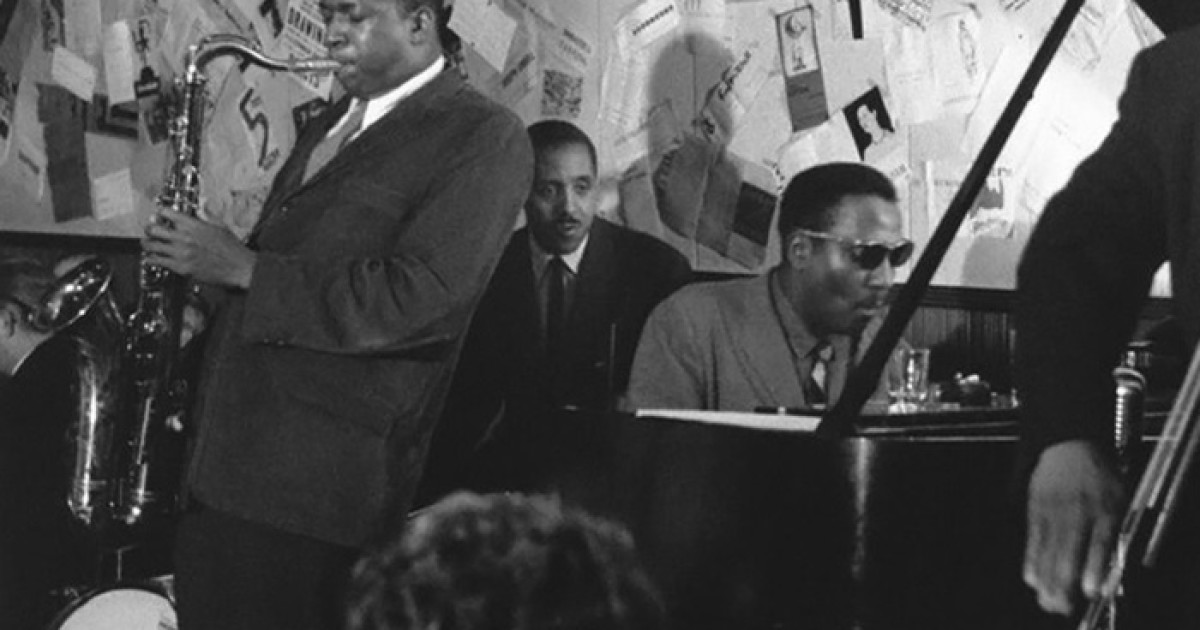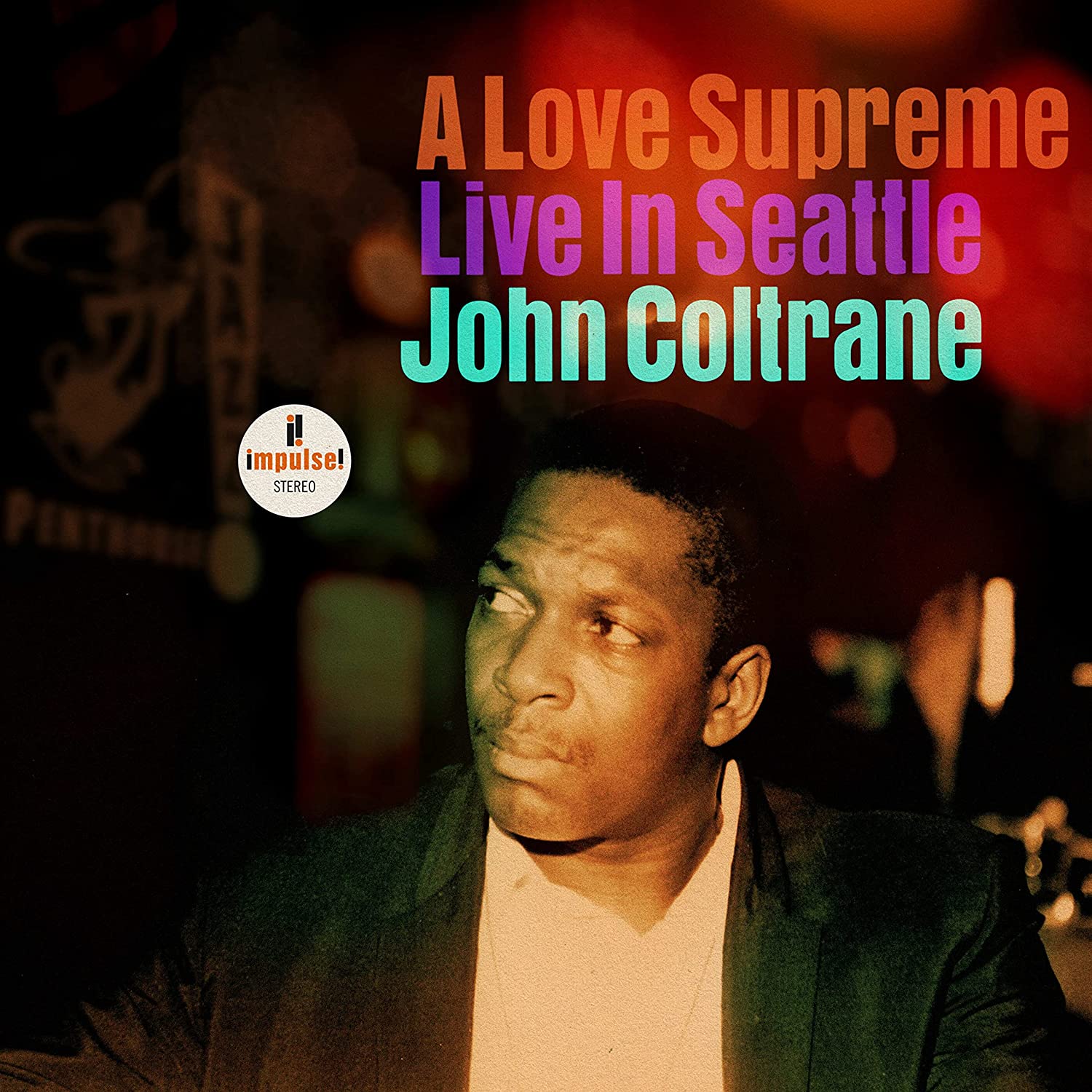
Trane. John William Coltrane (23 September 1926 – 17 July 1967). A giant of twentieth century music. As a sideman and then as a leader; as a premiere saxophonist (both tenor and soprano); plus he was also an inspiring composer. He created so much music. Over fifty years after his transition, new recordings continue to surface.
I count myself as a Trane freak. I have over 100+ CDs documenting his greatness. I never heard him live, but I luxuriate in and am inspired by his recordings.
Early on, as a young teenager, I used to walk out the room when his music came on the radio. However, one day in Nashville, while visiting at Fisk University, I was relaxing in the student lounge, and for the first time really heard “My Favorite Things”. Some higher power must have deemed that as I approached 18 years of circling the sun, I had now matured enough to appreciate music of higher realms.
I went on to devour all the music and studies of John Coltrane that I could obtain. I even constructed my own timeline and loved all the whistle stops Trane made as he roared through modern jazz. Unlike a number of jazz artists, even though his recording career as a leader was less that twelve years long, Coltrane’s music became the major force in the transition from bebop to the “new thing”.
Coltrane practiced incessantly. He cold-turkey stopped using drugs and drinking heavily. He read widely and was even seen in the audience at a Malcolm X speaking engagement. Coltrane developed a deep interest in African, Indian and oriental musical forms. When he married Alice McLeod, Coltrane became a devoted family man where he had a home in Long Island, New York. He also encouraged Alice to learn the harp which she went on to master.

THE PRESTIGE YEARS (1957 – 1958)
There are 14 albums with Trane as a leader or co-leader of Prestige sessions. Plus, there are numerous albums of Trane as a sideman for Prestige releases and for releases on other labels. During this period Coltrane often recorded with, as well as occasionally under the leadership of, Donald Byrd. Here is an excursion through the famous song, Lush Life.

MILES DAVIS YEARS (1955 – 1961)
Trane’s tenure with Miles is when the saxophonist attracted international attention and includes what is generally considered the major recording of modern jazz, Kind Of Blue. My favorite track on that album is Flamenco Sketches. I am also a big fan of the last Columbia-label recording that Trane and Miles did together, Some Day My Prince Will Come.There is no doubt that by this time, John Coltrane had established himself as the major musician in jazz.

A SUMMER WITH MONK (1957)
Trane briefly left Miles and spent a summer with Thelonious Monk. Some jazz scholars refer to this as Trane’s graduate education in his musical development. Certainly when Miles convinced Trane to rejoin the trumpeter’s band, Trane had matured under Monk’s leadership into a forceful, even dominating, soloist while learning to perform Monk’s idiosyncratic music. On their four official recordings, we hear Trane fully developing his fabled “sheets of sound” techniques. However, his ballad playing is also stellar, particularly Trane’s tender reading of Monk’s Ruby My Dear.

THE ATLANTIC YEARS (1959 – 1961)
With his recording of My Favorite Things, Trane became both a top-selling artist as well as a true innovator stylistically. As a saxophonist, he re-introduced the soprano saxophone as a leading instrument. Indeed, after this period in Trane’s development, many tenor saxophonists were encouraged, if not outright required, to double on soprano saxophone. Furthermore, his first recording on Atlantic was the ultra-influential Giant Steps album.

THE IMPULSE & PABLO YEARS (1961 – 1967)
Here we find both the mature and the all the way “out” phases of Coltrane’s career. The bulk of Trane’s recordings from this period are considered the pace setters for modern music. While the last handful of titles are often a matter of taste for those who rate and/or love all of Trane’s music, it is a generally accepted truism that A Love Supreme is Coltrane’s masterpiece. A healthy bulk of the Impulse catalogue is from the period of the classic John Coltrane Quartet, featuring McCoy Tyner on piano, Elvin Jones on drums, and Jimmy Garrison on bass.
While Trane’s technical prowess on mid- and up-tempo compositions is totally undeniable, he was also especially effective on blues and slow numbers. Trane’s composition and achingly effective reading of Dear Lord is exemplary of the spiritual deepness of a mature musician.
This brief essay is far from a complete discography and does not include significant European recordings from radio broadcasts that Trane did in 1961 and in 1965, nor do we include the miscellaneous sides Trane cut throughout his career with musicians as diverse as Earl Bostic, Johnny Hodges, Dizzy Gillespie, and Duke Ellington.
I consider Trane’s collaboration with Duke on a signature Ellington composition, In A Sentimental Mood, to be definitive–especially the arrangement, featuring Duke’s distinctive piano introduction and stylings that add a second melodic line to the iconic song. Duke and Trane are often considered the premier musician’s of their respective eras.
Moreover, I consider the Impulse-label, John Coltrane and John Hartman album as the most successful and satisfying of jazz albums featuring a male vocalist from that period. Of special significance is Trane’s new take of the Billy Strayhorn composition Lush Life, which Trane had recorded as an instrumental in 1957 during his Prestige years.

Which brings us to the crown jewel of Coltrane recordings: A Love Supreme – Live In Seattle. The story of how the recording was done and then not discovered until over fifty years later is an epic in itself.
There are so many reasons to recommend this album. First, this is an extended treatment of only three available recordings of the whole suite: 1. the studio release, 2. a live recording from a festival in France, and 3. this recording from the last night of an extended gig in Seattle.
Secondly, this is the first recording when Pharoah Sanders has joined Trane’s band. Pharoah would go on to produce some of the most challenging music of a long career that included seminal sides with John Coltrane as well as extremely popular and innovative music as a leader in his own rite.
Third, we hear Trane incorporating more percussion in his music in addition to Elvin Jones on drums. This is a pivotal moment in Trane’s development and is recorded during the same era as ground breaking albums such as Meditations, Ascension, both the 1961 Live At The Village Vanguard as well as Live At The Village Vangard Again!, and now this new release, recorded in 1965.
Rather than an overview, this is a actually a brief summation of the music of John Coltrane. The Coltrane wikipedia page offers more information including listing of books as well as overviews of Coltrane recordings. If one listens to the bulk of post-bop Coltrane, and particularly to the recordings Trane made as a leader, then one will received a thorough and insightful education in modern, twentieth century music.

The Master speaks of “The Master”
Interstellar Space resides in 30°/90°.